The surest way to raise a smile on a Polish border guard's face is to mention Brexit buzzwords like "frictionless" and "invisible". Brexit talks remain on a knife-edge, as British officials struggle to square the circle on the Border issue.
On the one hand, those anodyne adjectives describing the Irish Border from March 29th, when the UK is due to leave the EU. On the other, London's promise to take back from Brussels control of its borders and political destiny. But 2,000km east of London, there is little room for constructive ambiguity.
Sitting in his office on Poland's busiest border with Ukraine, four hours southeast of Warsaw, Cdr Robert Brychlik grins broadly and shakes his head when asked if an outer EU border can ever be frictionless or invisible.
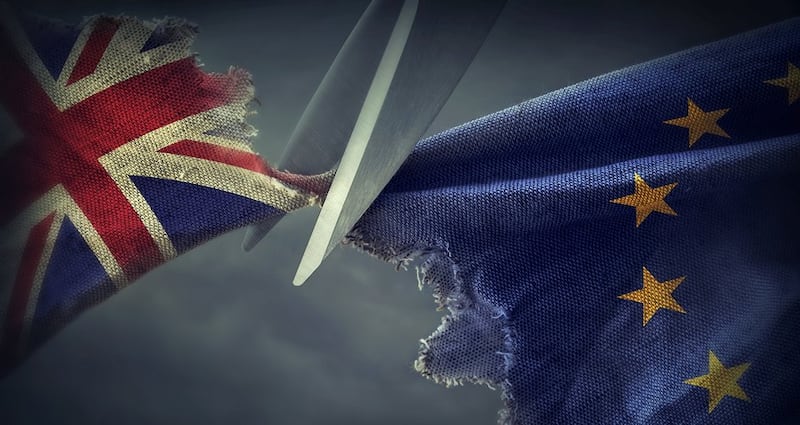
The checkpoint is a chastening throwback to how things were before EU open borders and a sobering reminder of how things are beyond the bloc
“There is no way this is possible,” he says, because there is no technology in the world that can prevent queues.
“Technical devices help us optimise and shorten waiting times, but cannot solve them entirely,” he says over a constant, low hum of hundreds of idling engines outside. “There is no getting away from the human element.”
Leaving his office, a sprawling checkpoint complex opens before us: a far-from-invisible sea of asphalt – unbearable in the recent summer heat – that covers 12 hectares, or almost 17 soccer pitches. Men in green uniforms walk around busily beneath a huge metal tower topped with cameras and aerials. They haven’t gone away you know.
A Ukrainian woman collects her passport from the checkpoint window and walks back to her car, at the top of a long queue, to drive into Poland.
The guards have a two-minute target for checking private traffic – every vehicle is stopped here – but all those two minutes add up.
“Just two hours’ wait today, sometimes it’s three,” says the woman with a tired smile.
A few lines over, truck driver Maciej is pulling out for the final run home into Poland. His truck is empty today but normally he transports hygiene products.
“I got straight through today but often you can wait here two or three days,” he says. “It’s a real nightmare.”
The checkpoint at Dorohusk is a chastening throwback to how things used to be before EU open borders and a sobering reminder of how things are beyond the bloc. Dead time here is measured out in hundreds of discarded, flattened cigarette butts.
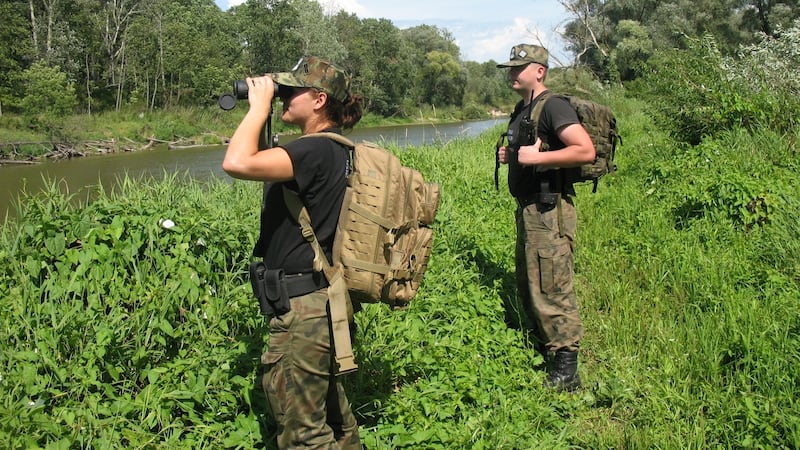
‘Hard work’
An hour before our visit, an enthusiastic border police official in the nearby Polish town of Chelm is anxious to explain, as he puts it, “just how much hard work a hard border can be”.
We watch a recent video of police in full riot gear raiding apartments and arresting surprised men in their underwear. Another video, clearly surveillance footage, shows men loading black boxes onto dinghies before police swoop. Some 38 people, all suspected members of a criminal organisation, were detained for smuggling 80 million zloty (€18.6 million) worth of cigarettes – a smugglers’ favourite in this part of the world. Another image is of an intercepted smuggler’s drone carrying 86kg of hashish.
Watching the videos, though, all anyone of a certain age from Ireland will see is the fatigues, the riot gear, guns, balaclavas and other accessories of a past most hoped was never coming back.
Challenging conditions
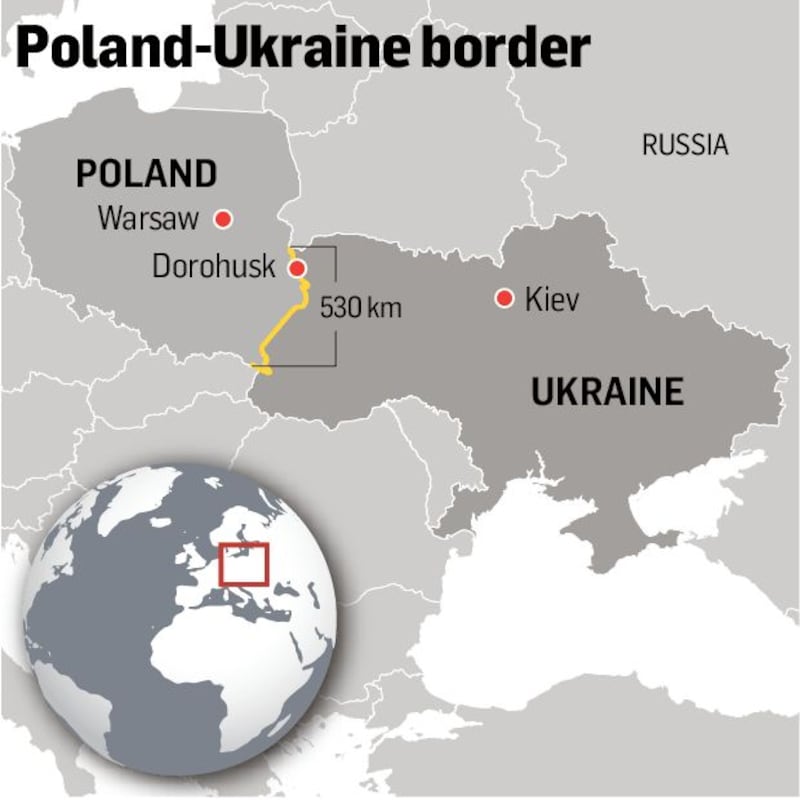
At 530km, the Poland-Ukraine frontier is barely longer than the inner Irish Border but is far more challenging to police. Beyond just five official crossings (compared with more than 200 in Ireland), border guards use helicopters, quad-bikes, boats, dinghies, thermal cameras and more to monitor forests and marshes around the river Bug that separates the two territories.
Compounding the challenge are weather extremes. The river freezes in winter and the water partly vanishes in hot summers, allowing anyone to walk across.
About 46,000 people were intercepted last year making so-called “irregular entries”.
On the approach road to the Dorohusk crossing, which handles about 40 per cent of traffic between Poland and Ukraine, more than 200 trucks are waiting in the right-hand lane this Thursday morning to leave Poland. In all it’s about 3km of idle Ukrainian hauliers heading home for the weekend – if they make it. Tomorrow it will be far worse, says senior commander Arkadiusz Tywoniuk.
He is responsible for almost 90 per cent of Poland’s border with Ukraine, here in the river Bug region.
Despite the staggering waiting times, the demands of globalised trade mean traffic continues to grow here and the checkpoint facility is facing its third upgrade since 1990.
A bilateral “small border traffic” arrangement allows locals in a 60km corridor here cross the border easily. But there are restrictions: Ukrainians cannot exceed 90 days a year in Poland, must not travel beyond the border area and require a visa to work legally.

Cdr Tywoniuk smiles quizzically when talk turns to seamless borders. Such talk, he makes clear, comes from people who don’t understand why the EU has closed borders like his: so that other EU borders can remain open.
“We have the practical perspective and we are responsible for security,” he says.
That means implementing security instructions for the Schengen free-movement area, such as a new rule to check all cars, including those previously waved through with only random checks.
And even these quick checks require considerable infrastructure, given that 767,000 vehicles passed this way last year.
The Dorohusk crossing employs 300 border guards and 260 customs officials who work in shifts, 24/7, every day of the year. All traffic arriving is funnelled through two narrow lanes until it spreads out in the transit compound.
After entering, vehicles went their way around a labyrinth of border police, customs, veterinary facilities, vehicle bays, toilet-shower blocks and warehouses. When a bus arrives, all passengers disembark and have their documents checked while they pass through airport-like security.
The truck's weight is compared to its registered cargo. A camera checks the registration plate. There are carbon dioxide sensors to detect hideaways
We watch a guard in one cabin process a truck driver in about five minutes, after hours of waiting.
A wide, copper-coloured strip on the road outside weighs the truck, and the weight is compared to the registered cargo. A camera cross-references the registration plate with police databases. There are carbon dioxide sensors to detect hideaways. A computer system assesses risk and, if necessary, orders a physical cargo check.
In a nearby shed, a guard waves in another truck and attaches large metal sensors to its underside, front and back.
Then he launches laptop software – that has the slogan: “For security that doesn’t miss a beat” – which, Cdr Robert Brychlik says, detects any living creature inside. Though people smuggling has dropped in the last 18 months, Chechens, Russians, Turks and even Iraqi stowaways still turn up.
Walking around his domain, Cdr Brychlik says he has worked in the border police service for 24 years. After serving on the open Polish-Czech border, he was transferred 18 months ago to this closed, hard frontier.
“My service wouldn’t have been complete without serving here,” he laughs, “on a border that reflects the true spirit of the job.”
As we leave the transit zone and walk across the river Bug, stopping at the official border in the middle, he points ahead to the Ukrainian transit zone. There is only limited co-operation, he says, and low levels of trust, between the two sides. After the bureaucracy on one side, drivers have to go through it all again on the other.
“A lot of the waiting on the Polish side is for the Ukrainians to process people,” he adds. “Only then can we let people across.”
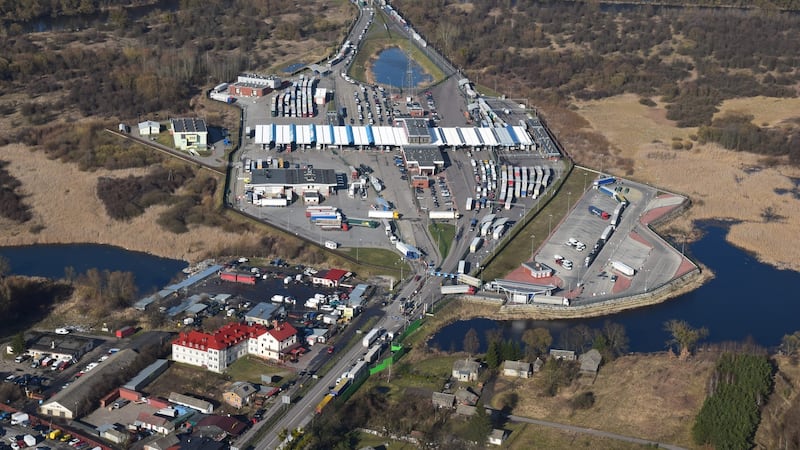
‘Takes getting used to’
Back at Dorohusk, we stop off with Austrian officer Herbert Enzinger, on secondment from EU border agency Frontex.
“When you are used to openness it takes some getting used to this border,” he says, looking up from his computer. “It really is hard.”
Talk to Polish border police about Brexit and they admit they are not familiar with the intricacies of the talks. They assume everything will be done to ensure traffic flow across the Irish Border will be as smooth as possible.
But the officers here know outer EU borders better than any politician in Whitehall. And at the EU outer wall, they insist, security takes priority over political or commercial concerns – regardless of the time that takes.
"We are conscious that the security of the entire European Union may depend on our good work," says Cdr Brychlik, walking us down the corridor to Poland's customs agency, the NRA. It is the second port of call for all incoming border traffic.
Dorohusk's NRA chief Jacek Iwanczuk lists his team's more exotic finds over the years: gallium; shoes made from the skin of protected snakes, and one of the world's biggest-ever meteors, which attracted bus tours of curious scientists.
Like his border police colleagues, Mr Iwanczuk says thoroughness of checks goes before haste – even if there is perishable cargo in trucks. Though, as an outer EU border, no food and no dairy – raw or processed – are allowed in here.

When Poland joined the EU – and Schengen – in 2004, it assumed responsibility for the bloc’s eastern wall. Some 14 years on, Mr Iwanczuk still remembers being made feel inferior by western colleagues who doubted that Poland was up to the job.
Now that Poland has achieved some of the highest border check standards in the EU, Mr Iwanczuk adopts a humourless smile when asked about what is starting to feel like the bad running joke of the day: the idea of a soft, invisible outer EU border in Ireland.
Looser border controls along the EU’s newest west wall, he says politely, could create problems stretching across the EU to here in the east.
“After our hard work here since 2004, it would be hard to accept that we do the work here and they don’t there.”
As Brexit talks go down to the wire, the only point of agreement on the Irish Border so far is that no pre-existing model will fit. The Scandinavian scenario between Norway and Sweden is for the optimists, while this Slavic scenario – with lights, checks, towers, delays, fences and uniformed guards – is for the pessimists.
Dorohusk is where Brexit Border magical thinking comes to die.
A TALE OF TWO BORDERS: IRELAND-UK V POLAND-UKRAINE
Many would bridle at the idea of comparing the UK to Ukraine, or the Irish land Border to the frontier marked by the brown, swirling waters of the river Bug separating Ukraine and Poland. But in some respects the Ukraine-Poland border is closer to what Britain wants than the much-studied Norway-Sweden border.
Firstly, the differences with the UK-Republic of Ireland situation. There are contrasts in terms of scale: Poland and Ukraine have populations of 38 million and 45 million respectively, with about eight million people living on both sides of the border region.
There are also huge economic disparities – between each other and with the EU. Poland’s per capita GDP income was roughly half the EU average last year ($17,192, compared with an average of $36,593) while Ukrainian GDP per capita ($7,894) was just one-fifth of the EU figure.
While Britain and Ireland have had passport-free travel since the 1920s, the Soviet era was one of closed borders for Poland and Ukraine. Then, just 14 years after the Cold War ended, the frontier to Ukraine tightened again when Poland joined the EU.
Geopolitically, they are worlds apart too: the UK is a stable constitutional monarchy, while Ukraine's burdened history with Russia – as a Soviet republic and further back – complicates their frozen conflict.
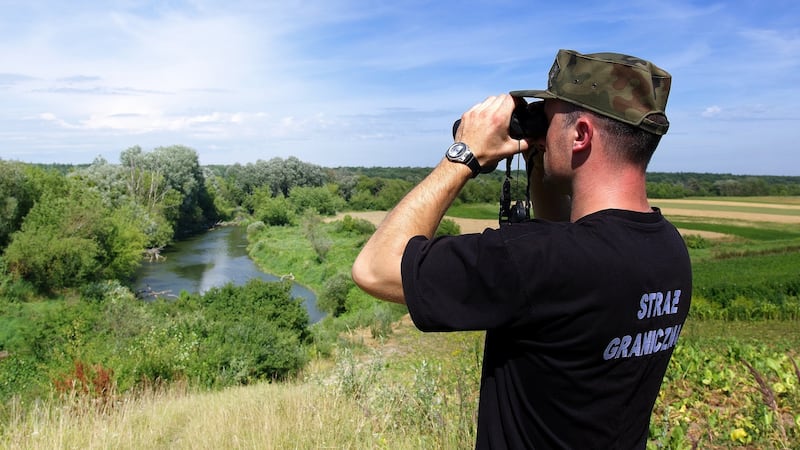
Mutual hostility between Moscow and Kiev is light years away from how Brexit tensions have strained but not snapped constructive ties between London, Belfast and Dublin.
Rather than look farther east, many discussing the Irish Border prefer to make a short leap – emotionally and politically – to a frontier model along Sweden-Norway lines.
Brexiteers insist the outer EU border dividing these Nordic neighbours hasn’t undermined close ties and has allowed for open borders similar to those between the UK and the Republic of Ireland.
But Norway is far closer to the EU than the UK claims it wants to be in the future.
Norway is part of the European Economic Area, allowing free movement of people with the EU. Though Norway is outside the customs union, meaning it sets its own tariffs on imported goods, goods of proven Norwegian-origin are allowed into the EU tariff-free.
It is unclear if any of these arrangements will apply to the UK from next March; a hard Brexit will mean the UK crashes out empty-handed.
Current talks, in which the UK wants to depart the customs union and possibly the single market as well, puts it further out than Norway or Switzerland and – on paper at least – closer to a so-called third-country like Ukraine.
Unlike Ukraine, the UK has 46 years of political ties to Brussels – and centuries of links to the Republic and its European neighbours. That may help soften any political and economic turbulence in uncertain times.
But, what is clear after 18 months of hard-nosed Brexit talks, nice words butter no parsnips.




















